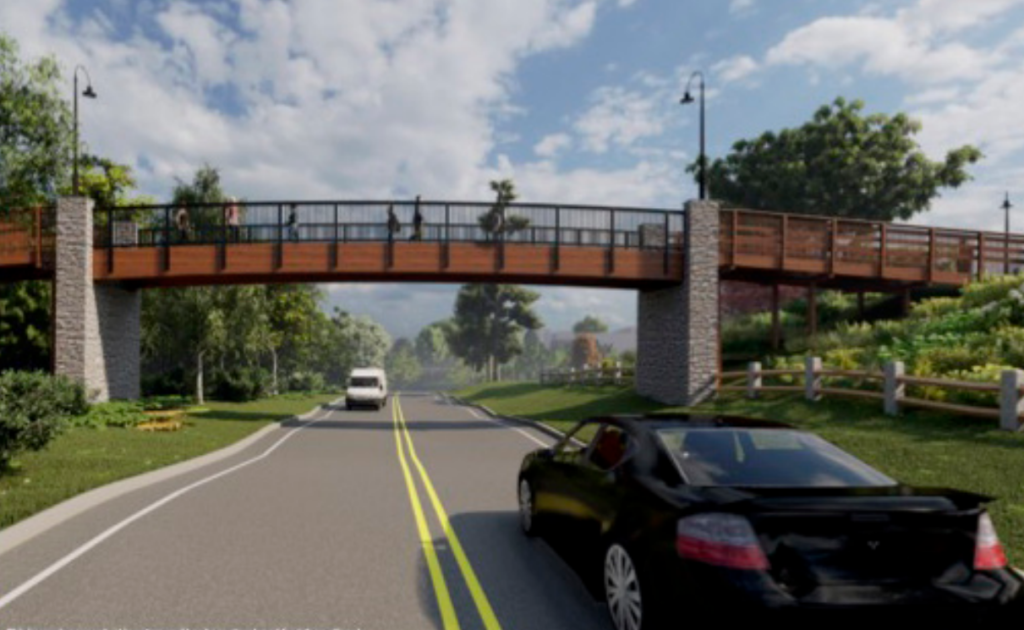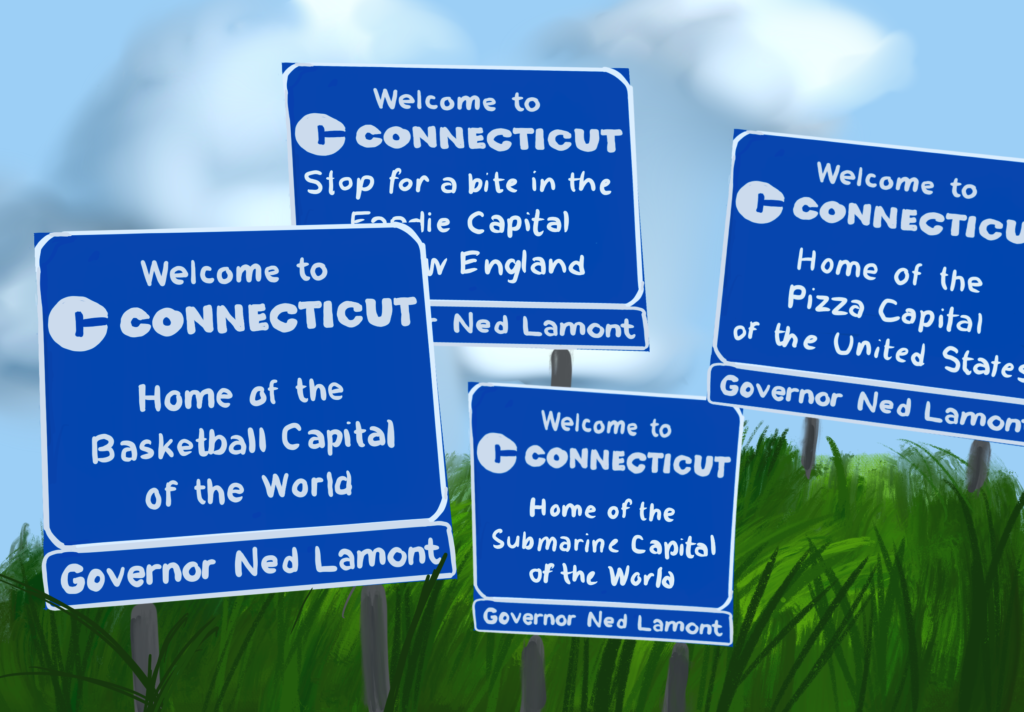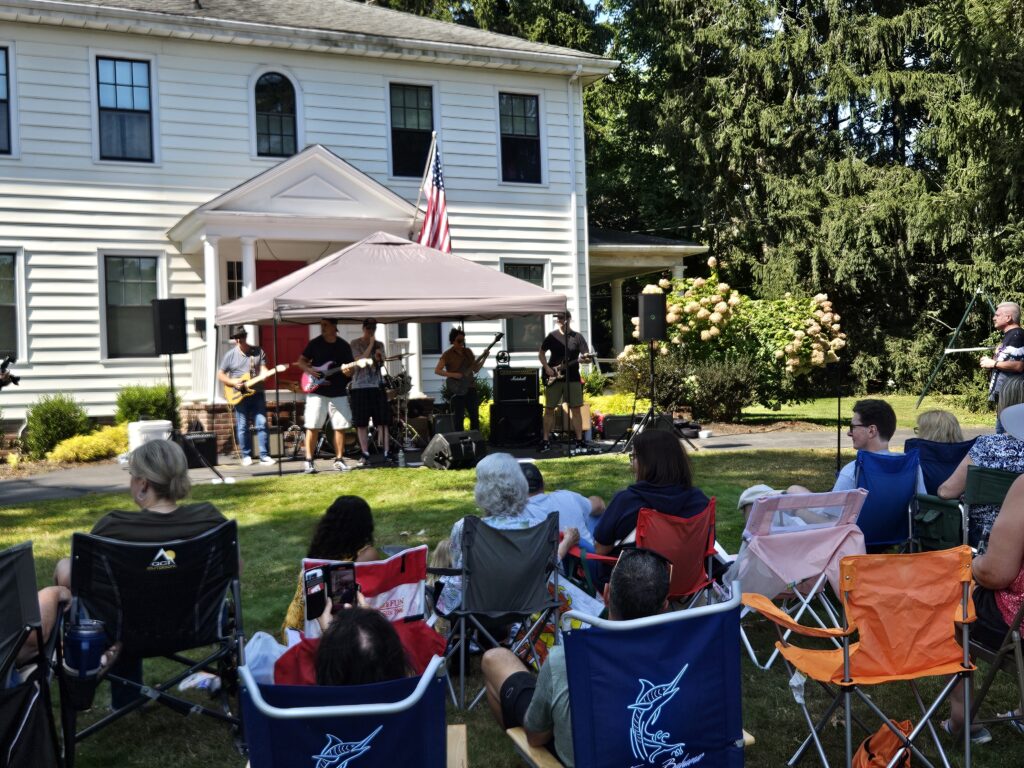
Photo courtesy of Dean of Students Mr. Will Gilyard ’98 and Chief Financial Officer Mr. Patrick Durbin
A digital rendering of what the pedestrian bridge may look like.
By Aiden Kuo ’27, Reporter
At the Wallingford Town Hall meeting on September 10, Choate advanced its plan to construct a pedestrian bridge that would connect the Bruce ’45 and Lueza Gelb Track and Rosemary Lane, improving both campus safety and connectivity. The proposed bridge would cross over the cross-country course, the JV baseball field, and the Thirds Girls’ soccer field, with the goal of being completed by next summer.
Choate student Victoria DeVito ’27 represented the School at the Town Hall meeting about permission for an air easement. This easement was necessary because some parts of the bridge will be on Choate property and others will cross into town jurisdiction.
DeVito emphasized the importance of the bridge for ensuring student safety. “It’s an opportunity to make crossing safer for students. I’ve had experiences and have had friends who have been in close calls with cars, and I think it’s essential that we alleviate this burden, not only from the students but also from the drivers,” DeVito explained. Once completed, the bridge will allow students to safely cross over the road without the issue of waiting for cars to stop, improving both student safety and traffic flow for drivers.
Choate’s Chief Financial Officer Mr. Patrick Durbin, who played a vital role in planning the bridge and developing other efforts to improve campus infrastructure argued that the bridge serves a dual purpose. First, he highlighted the bridge’s role in enhanced safety, pointing out that the road structure poses risks to pedestrians. “The road is on a hill, and cars can’t stop until it is very close,” Mr. Durbin said. “By creating the bridge, the risk of severe accidents can be eliminated.”
Mr. Durbin also stressed that it would increase efficiency for all community members. “It’s not just for the students and faculty,” he explained. “There are people that park in Colony Hall that need to cross over to reach their cars and use the track.” In the Town Hall, Councilor Mr. Jesse Reynolds echoed Mr. Durbin’s sentiment by acknowledging that Wallingford sports teams sometimes use Choate facilities. The bridge would also facilitate quicker access for Choate athletic teams, such as cross country, baseball, and soccer, to their respective fields.
Nevertheless, councilors Mr. Samuel Carmody, Mr. Thomas Laffin, and Mr. Reynolds expressed hesitancy to grant approval to the plan so quickly. They noted the potential negative effects of Choate projects on the town of Wallingford, citing the monetary aspects involved. Because Choate is a nonprofit institution, it does not pay property taxes on initiatives such as buying homes on Curtis Avenue. The councilors also believed that a $10 payment for the air easement due to crossing into town property was insufficient, as easements are typically over $100.
After the debate and other speeches from Wallingford residents, Choate alumni, and members of the Choate community like Chief Communications Officer Ms. Alison Cady, the Town Council motioned to vote. Overall, the Council was in favor of the bridge project, and in a 6-3 vote, the Council passed the air easement agreement.
In order to begin bridge construction, the School must get zoning approval from Wallingford’s Planning and Zoning Commission and finalize the bridge’s blueprints.




